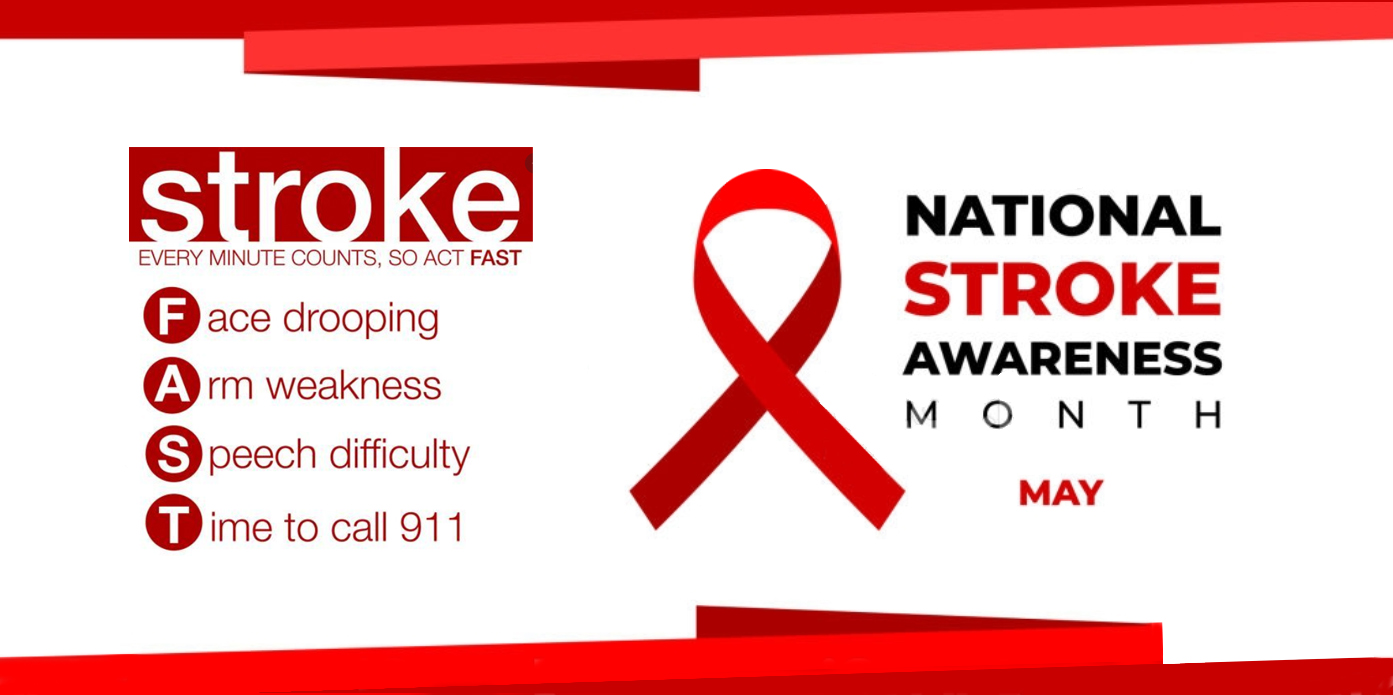National American Stroke Month

May is National American Stroke Month
National Stroke Awareness Month promotes public awareness of strokes and the struggles of persons who’ve experienced one or more, and the steps to prevent them. Strokes are the number two cause of death in the U.S. and worldwide. It’s also the leading reason for disability. There are an estimated 17 million strokes around the globe every year. Awareness is vital to reduce these statistics and improve quality of life.
Brief History of National American Stroke Month
The push to recognize stroke victims, the signs of a stroke, and how to prevent strokes began in 1989. The first few minutes of a stroke are the most vital. Over a million brain cells die every minute after a stroke before treatment is administered. Missing stroke symptoms and not securing help soon enough can be deadly. Someone dies from a stroke in the U.S. every four minutes. Prevention is another crucial part of Stroke Awareness Month. According to the National Stroke Association, 80% of all strokes are preventable.
Stroke Symptoms
It’s essential to know strokes can happen at any age. Remember F.A.S.T., which stands for face drooping, arm weakness, speech difficulty, and time to call 911. Other body responses include,
- Sudden numbness of the arm, face, or leg on one side of the body
- Sudden confusion
- Sudden vision problems in one or both eyes
- Sudden dizziness, trouble walking, or loss of balance
- Sudden severe headache with no known cause
Dial 911. If you’re experiencing these symptoms, do not drive yourself to the hospital.
A posterior circulation stroke in the back part of the brain can cause additional or different symptoms, such as
- Vertigo
- Nausea
- Vomiting
These strokes happen when a blood vessel in the back of the brain ruptures.
Millions of people survive and thrive after a stroke with the right care. Knowing stroke symptoms can save lives.
Preventing Strokes
You can’t change genetics or the past, but you can improve your wellness going forward. There are a few risks that you can reduce or even eliminate. First, keep your blood pressure no higher than 120/80. Hypertension can cause a stroke.
Maintain a healthy weight. Obesity increases the chances of having a stroke. The ideal BMI for a healthy heart is 25 or less. You can achieve a healthy weight and reduce blood pressure by limiting salt intake and regular exercise. Physical fitness reduces calories and lowers blood pressure. Moderate activity five times weekly can reduce stroke risk.
Benefits of a Medical Id Bracelet for Heart Disease Patients
Once someone has had a stroke, they have a higher risk of having another one. A medical ID bracelet can save you or your loved one’s life. Also, there’s a good chance you’re on medications to reduce the chances of future strokes. First responders need this information to diagnose and treat you in the event of an emergency. Buy a Universal Medical Data bracelet, pendant, or other accessories to keep your health care records close by for EMTs and emergency room physicians.
